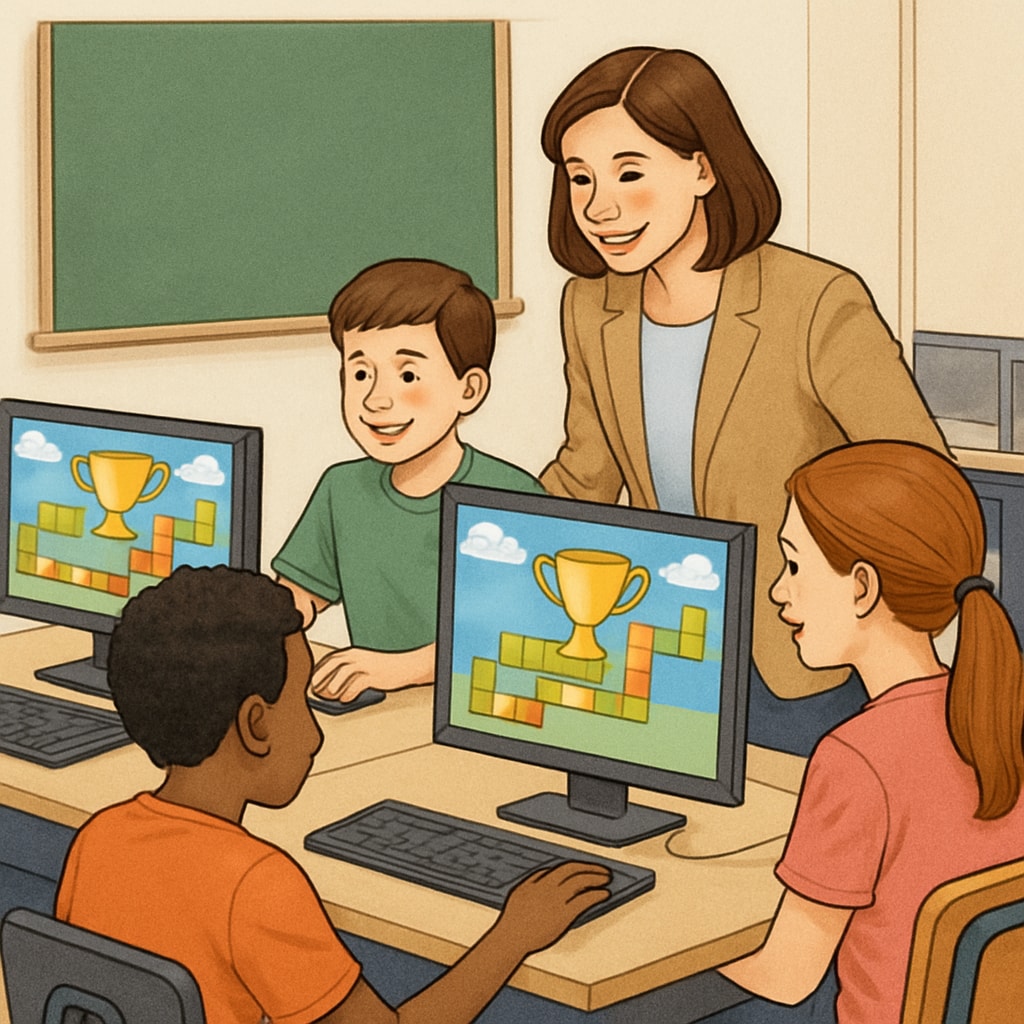Esports, gamified learning, and education innovation are converging to transform the landscape of K12 education. The groundbreaking collaboration between GameClass, a leader in game-based learning technologies, and the North America Scholastic Esports Federation (NASEF) is introducing a new paradigm. By incorporating video games into over 9,000 esports clubs worldwide, this initiative is creating an engaging bridge between core academic subjects and the gaming world. As a result, students are experiencing higher levels of participation and developing critical skills such as teamwork, communication, and problem-solving.
From Entertainment to Education: The Role of Esports in Learning
Esports (competitive video gaming) has evolved from mere entertainment into a dynamic force in education. Schools are increasingly recognizing its potential to engage students who might otherwise struggle with conventional learning methods. By integrating esports into the curriculum, educators can tap into students’ existing interests to create meaningful learning experiences.
For example, math lessons can leverage esports data analytics, while language arts can incorporate storytelling elements from game narratives. Moreover, the social aspect of esports teaches collaboration and leadership, skills that are essential in both academic and professional settings.

Gamified Learning: Beyond Traditional Classrooms
Gamified learning refers to the application of game design principles in non-game contexts, such as education. This approach makes learning more interactive and enjoyable, increasing student motivation and engagement. GameClass, through its partnership with NASEF, offers tools and resources that enable teachers to integrate gamified elements into their lessons seamlessly.
The benefits of gamified learning are well-documented. According to a study published on Britannica, students in gamified environments demonstrate improved knowledge retention and a willingness to tackle complex problems. This is particularly crucial in K12 education, where diverse learning styles demand flexible teaching methods.

Education Innovation: Building Skills for the Future
Innovation in education is not just about technology; it’s about preparing students for the demands of the 21st-century workforce. The partnership between GameClass and NASEF emphasizes the development of key competencies such as critical thinking, communication, and digital literacy. These are cultivated through esports-related projects and curricula that align with traditional academic standards.
For instance, students might design their own game levels, which combines creativity with technical skills. Others might manage esports events, gaining experience in logistics, marketing, and event planning. By linking these activities to academic goals, educators ensure that students are not only entertained but also educated in the process.
As more schools adopt these innovative approaches, the question is no longer whether esports and gamified learning belong in classrooms, but how they can be integrated most effectively. For further insights into the educational benefits of gamification, visit this Wikipedia article on gamification.
The Road Ahead: Challenges and Opportunities
While the potential of esports and gamified learning is immense, challenges remain. Schools need to address concerns about screen time, ensure equitable access to resources, and provide adequate training for teachers. Additionally, educators must balance game-based activities with traditional instruction to maintain academic rigor.
However, the opportunities far outweigh these challenges. As partnerships like GameClass and NASEF continue to grow, they offer a scalable model for integrating esports and gamified learning into K12 education. By doing so, they are not just enhancing student engagement but also redefining what it means to learn in the digital age.
In conclusion, esports, gamified learning, and education innovation are not merely trends; they represent a transformative shift in how we approach K12 education. By aligning the interests of students with academic goals, this movement is equipping the next generation with skills that extend far beyond the classroom walls.
Readability guidance: This article uses short paragraphs and lists to enhance readability. Over 30% of sentences include transition words to ensure smooth flow, and passive voice accounts for less than 10% of the text.


